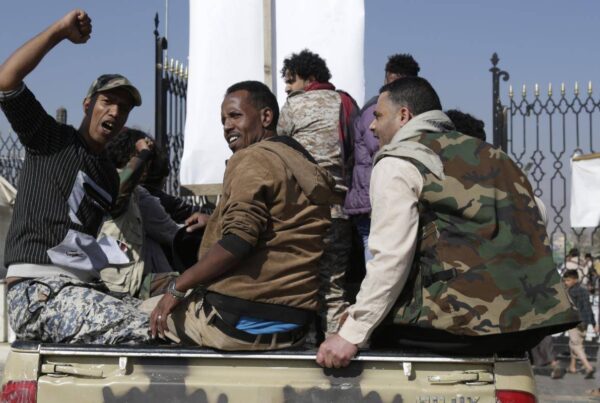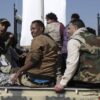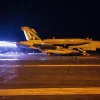Yemen’s new year kicked off while heavy sectarian battles were taking place in the northern part of the country, violence was escalating in the south, and, most important, a humanitarian situation was escalating around the country. Not long ago, Yemenis woke up to one of the most horrifying massacres in their lives when al-Qaeda in the Arabian Peninsula (AQAP) militants attacked a hospital inside the Defense Ministry, killing more than 50 people and injuring more than 100, mostly civilians.
However, despite all that, another subject has dominated the political scene in many parts of Yemen and has been in Yemenis’ conversation more than anything else the last few weeks. A few days before 2013 came to an end, the Yemeni president, Abed Rabbo Mansour Hadi, and the UN envoy to Yemen, Jamal Benomar, hosted a late-night event for the subcommittee of the Southern Working Group in the National Dialogue Conference. In front of cameras, political party representatives signed a document laying out the solutions for the southern issue in which Yemen will head toward having a federal state, giving Hadi the authority to chair a committee that will decide the number of the regions at a later stage.
The document was not actually signed by representatives to the committee from the General Public Congress (Hadi’s political party) at that moment. The party members rejected signing it, issuing multiple news releases and statements condemning the whole document before signing it weeks later, after local and international political pressure appeared to have been brought to bear.
Islah, an Islamist Party, signed the document right away. Its ally the Socialist Party, the south’s ruling party prior to Yemen’s 1990 unification, and the Nasserite Unionist Party also did not sign the document — at first. The Socialist Party’s main problem with the deal was that it left the choice between having six regions (four in the north and two in the south) or two regions to a to-be-established committee rather than declaring two regions, which had been the Socialists’ demand.
At the same time, violence in the southern provinces — where the document is supposedly to take effect — overshadowed controversy about the document. A few days after the document went public, the Yemeni military attacked a funeral involving the southern movement in the southern province of Aldhalea, killing more than 19 civilians, including women and children. The oil-rich Hadramawt province has been immersed in escalating tensions amid widespread, lingering outrage following the death of an influential tribal leader who was killed at a security checkpoint. On the last day of the year, AQAP attacked two security headquarters in Aden, injuring more than 10 soldiers, while armed men of the southern movement attacked a military base in the province of Aldhalea.
The escalation of violence in southern Yemen makes the political debate and controversy in the capital, Sanaa, appear irrelevant, coming far too late to make a real difference. The document presented as a solution to the southern issue isn’t just opposed by southern parties or factions, but by parties in the north as well.
To many, the proposed solution’s most dangerous element is that it is officially acknowledged that there is one unified southern identity versus a northern one — something that isn’t completely true. Some southern provinces — al-Dhale, for example — are as tribal as provinces in the north. By contrast, the “northern” city of Taiz is far less tribally oriented than most of the south. Furthermore, the proposal divides legislative and executive powers evenly between the south and north — something that many northerners see as inherently undemocratic and contradicting justice, since the north has 75% of Yemen’s population.
The president and international community are aiming to bring the Conference of National Dialogue to a belated end through the proposal, but there are many hurdles to arriving at a concrete solution.
Yemen was slated to have elections in February 2014, but there are few tangible signs of progress in the capital, and both logistical and security matters may render it impossible for the elections to take place. Delaying the elections without any tangible progress in solving the legitimate grievances of southerners may only draw south Yemen — and even the rest of the country — into more problematic scenarios.
So far, the finally signed document in Sanaa has been presented as a solution for the south and has been welcomed by the international and Gulf Cooperation Council countries, but it is actually not the solution to the south’s grievances today, even if it is accepted in the north.
The source of tension and hurt in the south is not that federalism is missing or whether Yemen’s administrative system has two or six regions. Its anger is instead rooted in specific issues. After Sanaa’s victory in the 1994 civil war, miles of southern lands were taken by powerful elites who still hold sway from Sanaa, while tens of thousands of southerners were removed from their jobs. Even now, security forces continue to engage in violent crackdowns targeting unarmed protests in the south of the country.
The slow progress of the Yemeni government in solving the grievances of the south and in becoming more responsive has made it challenging for the National Dialogue Conference to gain confidence and trust in the south and north.
Yemenis well remember 1994, when various political parties and leaders reached a similar agreement about the south, but it wasn’t many months until war broke out between the south and north. Yemen isn’t just a place where history repeats itself, but a place where wars in particular repeat themselves, even if taking different shapes and forms. The year 2013 was very similar to the promising and free political year of 1993; will 2014 take 1994’s face? At the least, its beginnings have definitely been similar to those of 1993.








